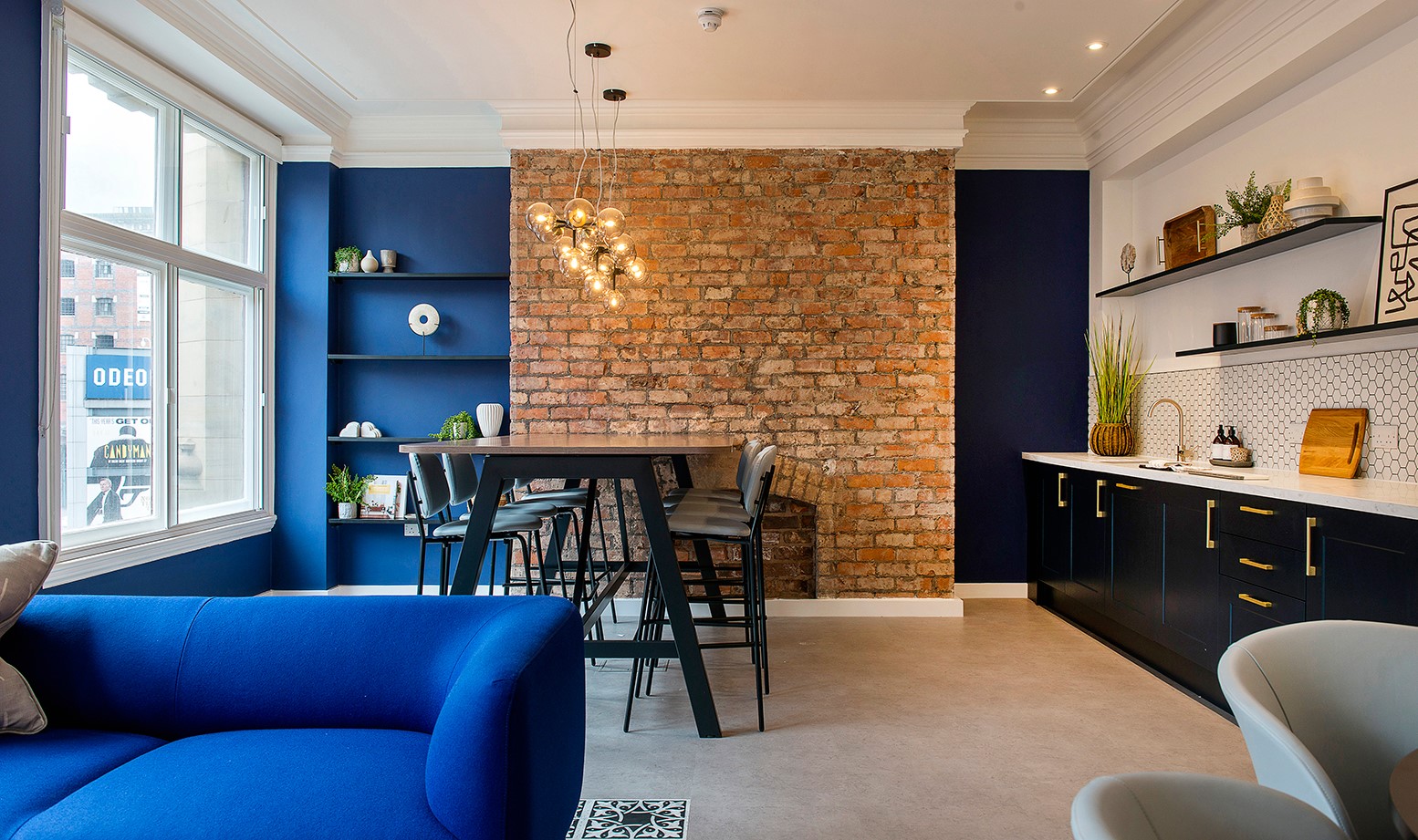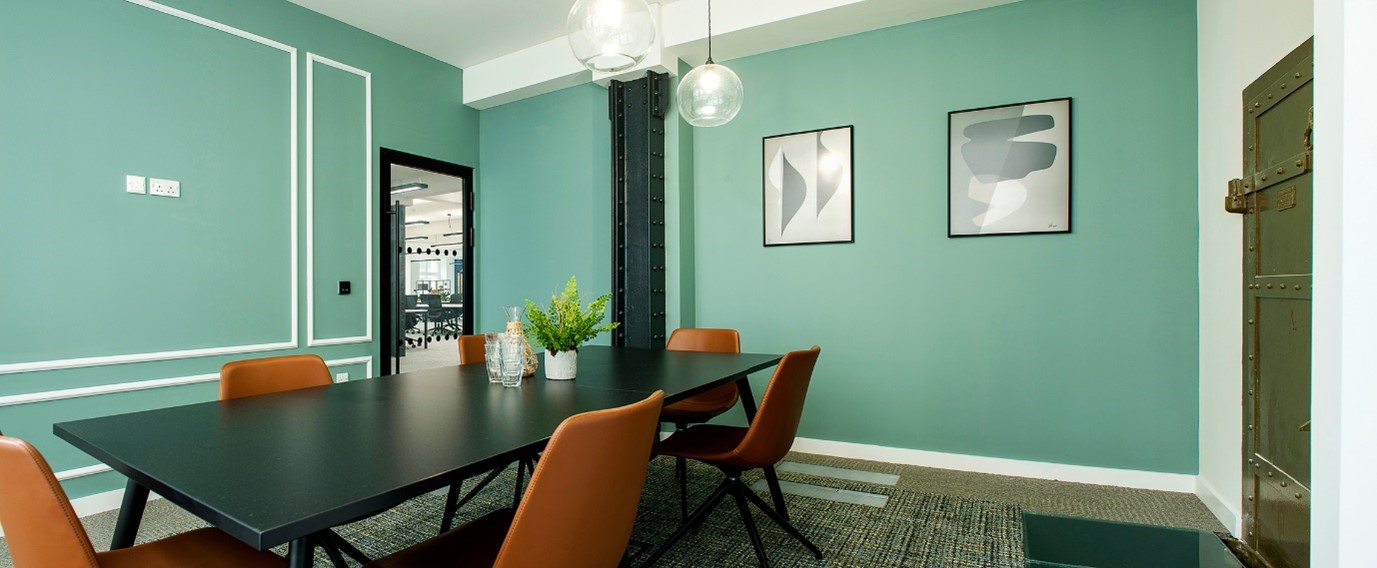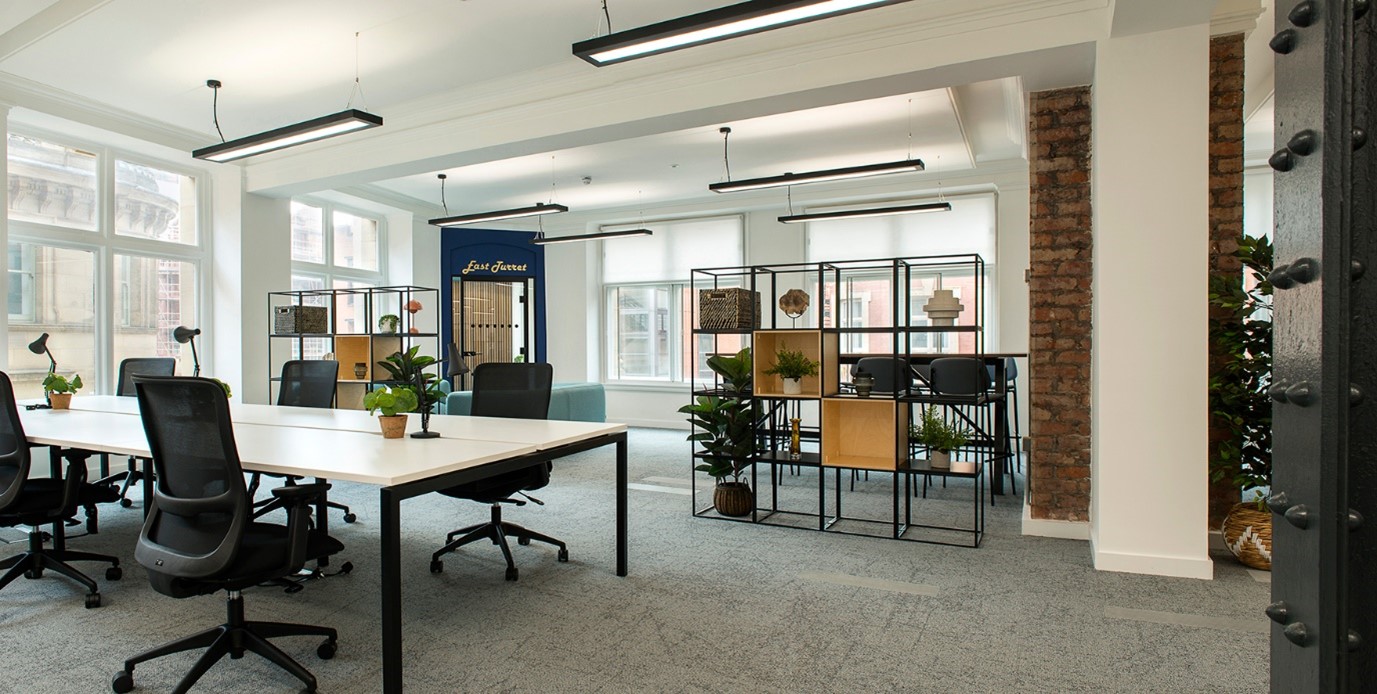As the world continues to evolve, so does the way we work. The traditional office layout with rows of desks and fluorescent lighting is giving way to a new era of workspace design that prioritises creativity, collaboration and well-being. The traditional 9-to-5 office routine becomes less dominant and the future of office design is being reborn. Designers are beginning to challenge the workplace and reimagine new and creative environments, with less of an office feel and more about maximising space and creativity.
Flexibility and Hybrid Spaces:
One of the key aspects of future workspace design is flexibility. The traditional office routine and fixed work locations are becoming less relevant in today’s society. Occupiers are now seeking a better work-life balance with the freedom to choose where and when they work. The new era of offices are designed generally with a hybrid approach, allowing flexibility for remote working options.
The rebirth of a new and improved office environment transforms spaces to create shared desking areas, collaborative zones and quiet areas. This concept allows employees to transition between different areas depending on their working needs, encouraging maximum productivity and well-being.

Biophilic Design and Well-being:
We now recognise the impact that physical environments can have on mental health and productivity. Investing in a healthy workspace will contribute to a thriving and sustainable work environment.
Research shows that on average, “people spend 90% of their lives in buildings and in a typical office environment, up to 60% of staff don’t have sufficient access to daylight”. Introducing design elements of biophilia into a space can help connect people to nature, which can further improve their overall work performance.
Turning the office into a destination filled with plants, natural materials and textures can mimic the feeling of being outdoors. This helps to create a sensory and appealing experience for occupiers to look forward to using a space that is designed with their needs in mind.

196 Deansgate- Meeting Room
Collaboration and Community:
The future workspace looks certain to embrace a culture of collaboration and community.
Already, instead of isolated workstations, the emphasis will be on spaces that encourage teamwork and communication. Designated areas for certain collaborative needs can include shared worktables, soft seating arrangements and writeable whiteboards, which will make it easier for teams to visualise their ideas.
Today's office serves as a hub for networking and socialising, contributing to a successful company culture.
Sustainable Design:
With environmental changes becoming an increased concern, workspace will need to adopt a sustainable and eco-friendly practice. Companies will need to prioritise energy efficiency, waste reduction and responsible sourcing of materials. This is where designers can play a massive part in contributing to the new and improved workspace.
Designers can prioritise the use of sustainable materials and production processes in their projects. By selecting materials for the workspace that offer a lower environmental impact, such as recycled or renewable materials.

Opening Minds and Reimaging Environments:
The future of workspace design is imaginative and interesting, as it adapts to the changing expectations of the modern workforce. Today's office environment should inspire and embrace flexibility and a sense of community. New and innovative ideas will adopt a thriving workforce that will contribute to the overall success of a business.
So, maybe your work environment is ready to be reimagined?
Contact Standing Space Ltd and let's reimagine your new work environment together!
01925 602033
